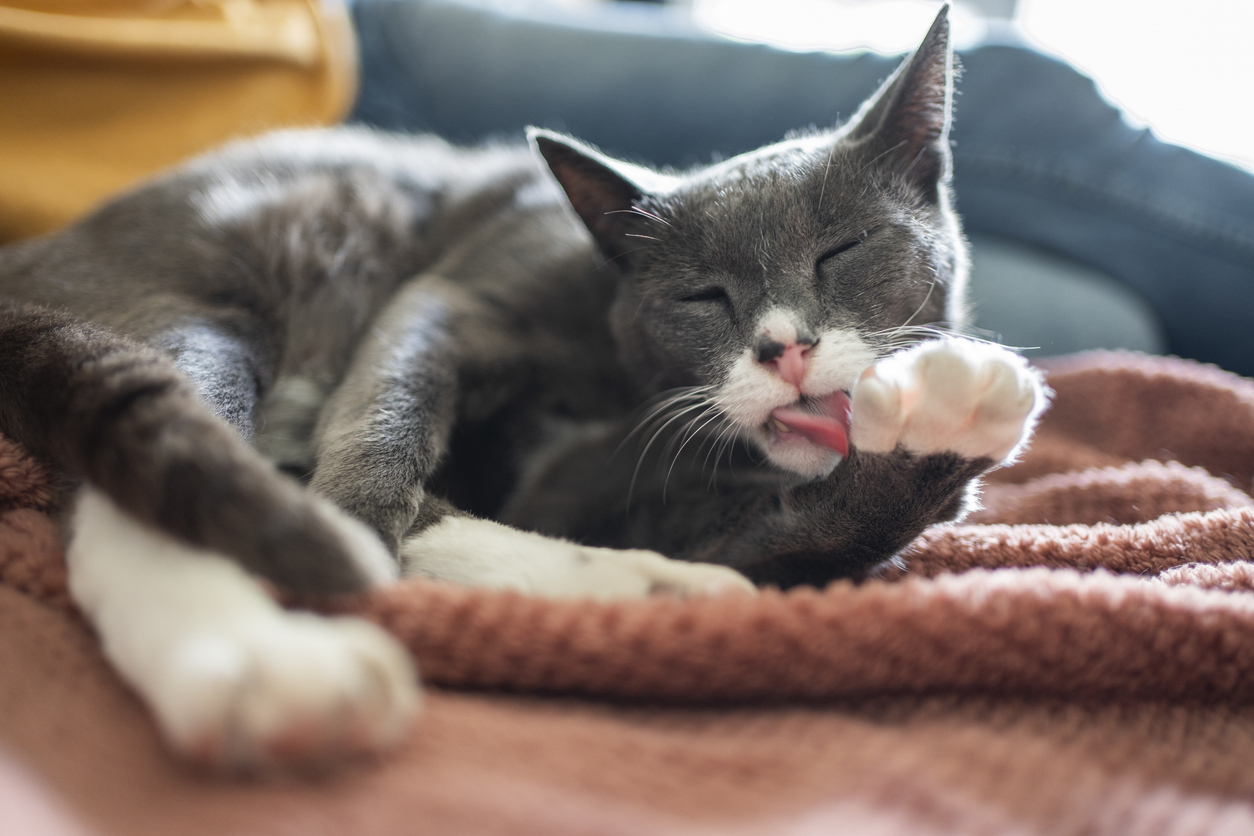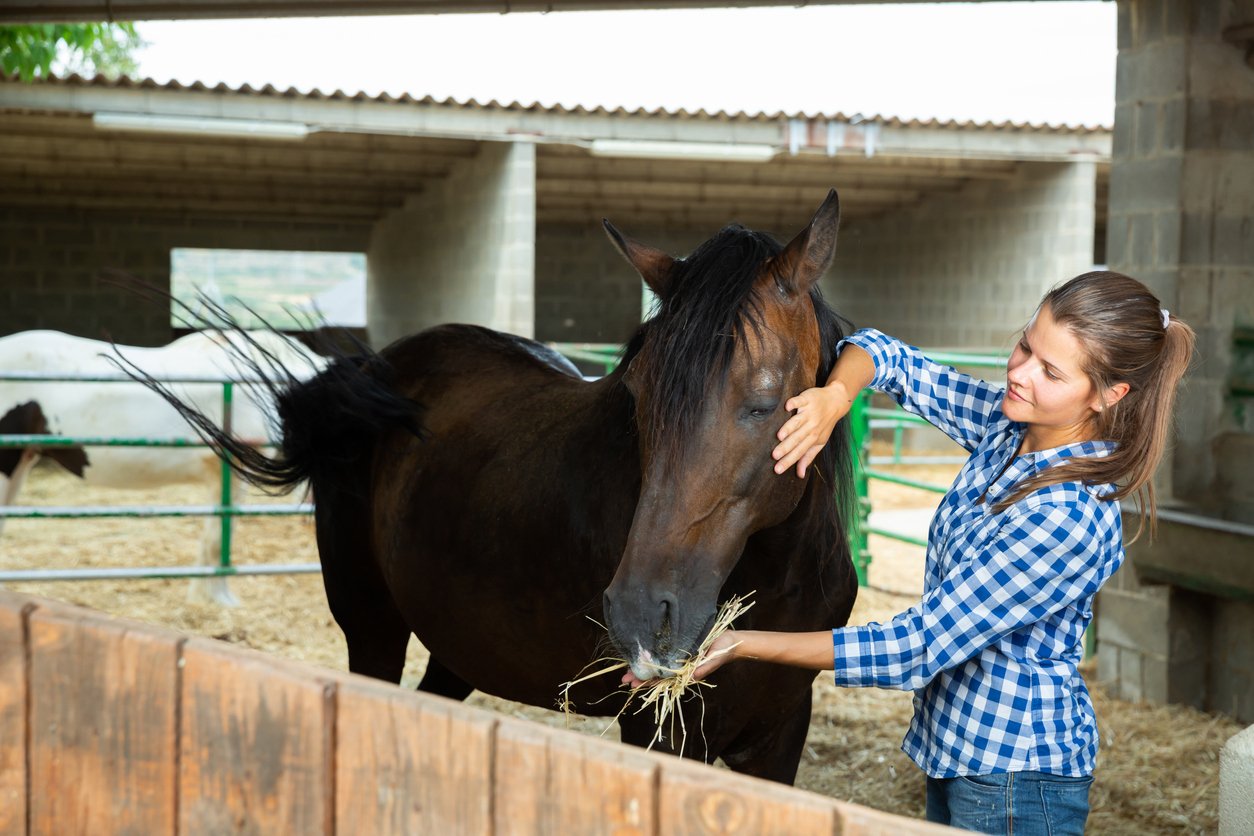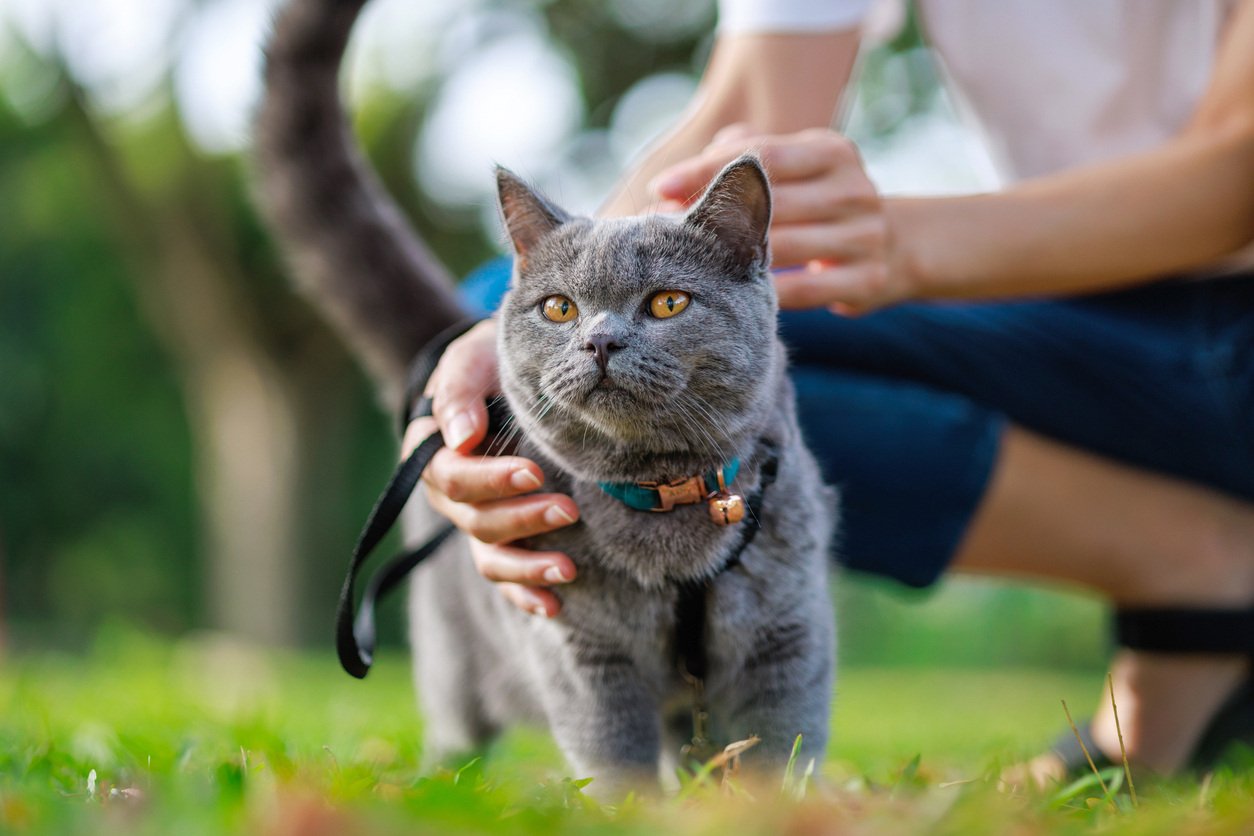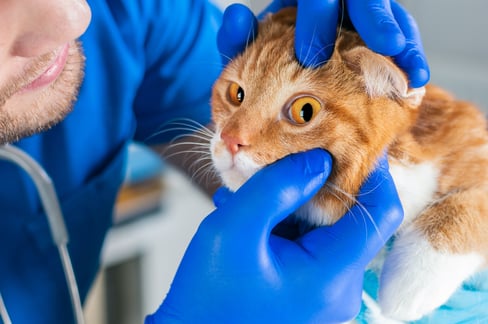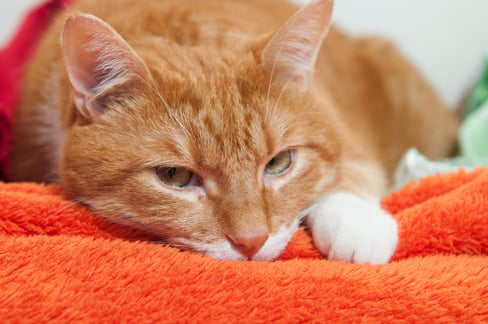Table of Contents
Cats have a way of turning even the smallest sound into a source of worry for their owners. And sneezing is no exception. An occasional sneeze might seem cute or harmless, but if your cat is sneezing a lot, it could be their body’s way of telling you something’s off.
Just like people, cats sneeze for many reasons: dust in the air, seasonal allergies, or even underlying infections.
In this guide, we’ll help you sort through the possibilities, from everyday irritants like pollen or cleaning products to more serious causes such as dental disease or viral infections.
With the right knowledge and care, you can keep your cat’s whiskers twitching happily and their breathing clear and comfortable.
Why Is My Cat Sneezing a Lot? Common Causes
When a cat is sneezing a lot, it can be unsettling, but the good news is that most sneezing has simple explanations.
Sometimes it’s just a tickle in the nose from dust, while other times it may point to infections or allergies that need a little more attention. If you’ve ever wondered “why is my cat sneezing a lot?”, here are the most common causes to keep in mind.
Environmental Irritants
Most of the time, sneezing is nothing to worry about. Around 99% of random sneezes are caused by harmless irritants like a speck of dust or a bit of fluff.
Is your indoor cat sneezing a lot? This is often linked to the quality of the air inside your home and common irritants like:
- Dust: Cats are low to the ground, which means they’re constantly exposed to dust stirred up from furniture, litter boxes, and carpets. Even mild irritation can trigger a sneezing fit.
- Pollen: Just like people, cats can react to seasonal pollen drifting through open windows or clinging to your clothes. Outdoor cats are especially prone, but even indoor cats may sneeze during high-pollen seasons.
- Fragrance: Scented candles and air fresheners may smell pleasant to us, but the fragrance particles can irritate your cat’s sensitive nasal passages, leading to sneezing.
Infections
When sneezing doesn’t pass quickly, infection is often the cause. Feline herpesvirus and calicivirus are behind nearly 90% of upper respiratory infections in cats, making them the most common culprits when sneezing turns into something more persistent.
Viral infections
- Feline herpesvirus (FHV-1): Many cats carry this virus for life, and stress or illness can reactivate it, leading to bouts of sneezing, eye discharge, and congestion. In many cases, the nasal symptoms go hand in hand with eye problems such as redness, swelling, or irritation. That’s why cats dealing with herpesvirus flare-ups often show signs of conjunctivitis, a condition that can develop alongside respiratory infections.
- Calicivirus: Another widespread virus, calicivirus not only causes sneezing but may also bring mouth ulcers or fever.
Bacterial infections
- Bordetella: Although this bacterium is more commonly found in dogs, it can also infect cats, especially in shelters or multi-cat households.
- Chlamydophila felis: This bacterium often causes both sneezing and conjunctivitis (red, watery eyes).
Fungal infections
- Though rare, fungi such as Cryptococcus can infect the nasal passages, particularly in cats that spend time outdoors because the fungus is often inhaled from animal fecal matter. Fungal infections are more serious and require veterinary treatment.
Allergies
If your cat has been sneezing a lot but otherwise seems healthy, allergies could be to blame. Cats can develop sensitivities to many of the same triggers that affect people, such as:
- Seasonal pollen: Sneezing often flares up in spring and fall when pollen counts are highest.
- Mould: Damp areas in the home can harbor mould spores that irritate your cat’s nose.
- Litter dust: Some types of clay litter release fine dust particles that are easy to inhale. Switching to a low-dust or natural litter can reduce sneezing.
- Perfumes: Strong scents, whether from air fresheners, detergents, or personal care products, can overwhelm a cat’s sensitive nose.
Dental Disease
Not all sneezing starts in the nose. Infected teeth, especially in the upper jaw, can affect the nearby nasal passages. You might be surprised to learn that between 50% and 90% of cats over four years suffer from some form of dental disease, like gingivitis, tooth resorption, or abscesses.
Problems in the upper jaw can quickly affect the nearby nasal passages. In many cases, sneezing or nasal discharge actually stems from an infected tooth root, a situation vets see frequently.
So, if your cat started sneezing a lot and also shows signs of dental pain (drooling, pawing at the mouth, refusing hard food), it may be time for a dental exam.
Foreign Objects
Sometimes sneezing happens because something tiny is lodged in your cat’s nasal passages. Grass blades, seeds, or other small particles can cause sudden, repeated sneezing.
If your cat is suddenly sneezing a lot in a row and pawing at their nose, they may be trying to dislodge a foreign body. Veterinary help is usually needed to remove it safely.
Situational Scenarios: Interpreting Sneezing Patterns

Not every sneeze means the same thing. Sometimes a cat sneezing a lot but acting normal is simply reacting to dust in the air, while other times frequent sneezing with snot signals something more serious that needs a vet’s attention.
The trick is paying attention to the patterns. For example, consider how often your cat sneezes, whether there’s discharge, and what else has changed in its behavior or environment.
The table below outlines some of the most common sneezing scenarios, what they might mean, and what steps you can take next.
|
Sneezing Pattern |
Likely Causes |
Next Step |
|
Cat sneezing a lot but acting normal |
Mild irritants, allergies |
Monitor at home, reduce exposure to dust/pollen |
|
Cat suddenly sneezing a lot |
Viral or bacterial infection, foreign body |
If persistent >24 hrs, schedule vet visit |
|
Cat sneezing a lot in a row |
Allergies, irritants, mild infection |
Monitor closely; if fits worsen, consult vet |
|
Cat sneezing a lot no discharge |
Usually irritants or allergies |
Low concern, continue monitoring |
|
Cat sneezing a lot with snot (yellow/green) |
Bacterial infection or inflammation |
Vet appointment recommended |
|
Cat started sneezing a lot after environmental change |
New litter, cleaning products, or moving homes |
Identify and remove irritant, monitor for improvement |
Cat Sneezing a Lot but Acting Normal
If your cat is still purring, playing, and eating as usual, there’s usually no need to panic. Occasional sneezes can be as simple as a dusty sunbeam, a puff of litter, or pollen drifting through an open window.
What matters most is the overall picture: bright eyes, steady energy, and no signs of discomfort.
Cat Suddenly Sneezing a Lot
When sneezing comes with thick yellow or green discharge, that’s your cue to pay closer attention. Coloured mucus usually points to infection or inflammation, and your cat may also seem a little quieter or less interested in food.
In some cases, nasal discharge comes with watery or swollen eyes, which is a combination that may indicate a cat eye infection.
Cat Sneezing a Lot in a Row
Back-to-back sneezes often mean something is irritating the nasal passages. Watch how often they happen and whether they’re getting longer or more intense.
If sneezing fits become frequent or your cat seems uncomfortable, your vet can help identify the culprit.
Cat Sneezing a Lot No Discharge
Sneezing without any nasal or eye discharge is usually the least concerning scenario. This type of “dry” sneeze often comes down to a mild irritant in the air or a temporary tickle in the nose.
If your cat remains energetic, affectionate, and interested in meals, you can simply continue to observe. In many cases, these sneezes resolve on their own once the irritant passes.
Cat Sneezing a Lot With Snot
Thick yellow or green discharge is a sign that a bacterial infection or inflammation may be at work.
Alongside the sneezing, your cat may seem quieter than usual or show less interest in food. Because infections can worsen quickly if left untreated, this is the moment to reach out to your vet for guidance and proper treatment.
Cat Started Sneezing a Lot After Environmental Change
Cats are sensitive to change, so sneezing that starts after a move, a switch in litter, or the introduction of new cleaning products is often linked to the new environment.
Irritants like scented sprays or dusty litter can set off sneezing spells until your cat adjusts, or until the irritant is removed.
If symptoms improve once the suspected trigger is taken away, you’ve likely found your answer. If not, your vet can help rule out other causes.
Special Case: Cat Reverse Sneezing
If you’ve ever seen your cat reverse sneezing, it can be alarming. Instead of the typical “achoo,” reverse sneezing looks more like your cat is gasping for air in short, sudden bursts.
While it may appear dramatic, it’s usually harmless and often resolves on its own. Understanding what’s happening can help you stay calm and know when to call the vet.
Difference Between Reverse Sneezing and Regular Sneezing
Regular sneezing is your cat’s way of forcefully expelling irritants out of the nose. Reverse sneezing, on the other hand, is an inward pull of air.
During an episode, your cat may stand still, extend their neck, and make repeated snorting or honking sounds as they try to clear the back of their nasal passages. The main difference lies in the air direction: normal sneezing pushes air out, reverse sneezing pulls it in.
What Cat Reverse Sneezing Sounds Like
Pet parents often describe the sound as a cross between a snort and a honk. It may last for a few seconds up to half a minute and can happen in clusters.
- Snorting: These are short, sharp inhalations that sound a bit like snoring but happen much faster. Your cat may extend their neck and flare their nostrils as they try to clear the irritation.
- Honking sounds: Many owners compare it to the honk of a goose. It’s a deep, throaty noise that can repeat several times before the episode passes. Although it can be startling the first time you hear it, this sound is a hallmark of reverse sneezing rather than a dangerous breathing issue.
Because reverse sneezing can be confusing to describe, recording an episode on your phone is one of the most helpful things you can do. If your cat reverse sneezes a lot, sharing that video with your vet allows them to confirm what’s happening and decide whether it’s harmless or linked to something that needs treatment, like allergies, nasal irritation, or polyps.
Possible Triggers
Reverse sneezing has several common triggers, most of which aren’t dangerous. Episodes can often be linked to:
- Nasal irritation: Dust, perfumes, or even a tickle from a piece of grass can set off a bout of reverse sneezing.
- Allergies: Seasonal pollen or indoor irritants may cause repeated episodes.
- Post-exercise: After vigorous play, some cats experience temporary irritation in their throat or soft palate that leads to reverse sneezing.
In most cases, reverse sneezing is nothing to worry about. However, if you notice it in your cat more often than normal, it’s best to consult your vet to rule out underlying issues like polyps, infections, or chronic allergies, especially if episodes are daily or seem to cause distress.
When Sneezing Signals a Bigger Problem
Is your cat acting unusually tired? Have they lost their appetite? Do you notice thick discharge or labored breathing? These changes can indicate an underlying infection or illness that requires veterinary attention.
Let’s look at the most common warning signs, what they could mean, and how quickly you should act.
|
Symptom |
What It Could Indicate |
Vet Needed? |
|
Lethargy |
Systemic infection or illness |
Yes, urgent |
|
Appetite loss |
Underlying illness or infection |
Yes, within 24 hrs |
|
Fever |
Viral or bacterial infection |
Yes, urgent |
|
Thick yellow/green discharge |
Bacterial infection |
Yes, soon |
|
Bloody discharge |
Trauma, serious infection, or growth |
Yes, immediate |
|
Difficulty breathing with sneezing |
Possible respiratory infection or obstruction |
Yes, emergency |
How Vets Diagnose Sneezing Causes

Dealing with a cat sneezing a lot, but still no improvements after at-home adjustments? The next step is a trip to the vet.
Sneezing can come from something as minor as a dust allergy or as serious as a dental abscess, so vets use a variety of tools to pinpoint the underlying cause. Here’s what you can expect during the diagnostic process:
- Physical exam: Your vet will start with a thorough physical exam, looking at your cat’s nose, throat, eyes, and overall body condition. They’ll check for discharge, swelling, or signs of discomfort that could explain why your cat is sneezing a lot.
- Nasal swabs: If an infection is suspected, your vet may collect a nasal swab to test for bacteria, viruses, or fungi. This helps identify whether your cat’s sneezing is linked to something common, like herpesvirus, or something more unusual.
- X-rays: Imaging can reveal problems you can’t see from the outside. X-rays may show nasal blockages, sinus inflammation, or even hidden dental disease that could explain persistent sneezing.
- Dental checks: Because dental issues can spread to the nasal passages, your vet will examine your cat’s teeth and gums. Infected teeth in the upper jaw are a well-known cause of sneezing, especially if your cat suddenly started sneezing a lot alongside drooling or refusing food.
- Lab tests for viral or bacterial causes: When sneezing seems chronic or severe, bloodwork and additional lab tests can provide a clearer picture. Identifying whether the problem is viral, bacterial, or related to another health issue helps guide the right treatment plan.
Cat Sneezing Treatment and Home Care
Is your cat sneezing a lot but doesn’t show serious warning signs? There are safe ways to ease their discomfort at home while supporting long-term health.
- Environmental adjustments: Your home environment plays a major role in reducing sneezing. Keep rooms well-ventilated, vacuum regularly, eliminate scented candles, incense, and air fresheners, and consider swapping harsh cleaning products for pet-safe alternatives. For an indoor cat that’s sneezing a lot, this simple step often makes a big difference.
- Air purifiers: Using an air purifier with a HEPA filter can help trap dust, pollen, and other airborne particles that irritate your cat’s nasal passages. This is especially helpful if your cat started sneezing a lot during allergy season or after a recent move, as a new, dusty environment could also be the culprit.
- Litter changes: Dusty litters are one of the most common culprits behind sneezing. Switching to a low-dust or natural litter (like paper or wood pellets) can dramatically reduce irritation. If your cat suddenly started sneezing a lot after changing litter, this is the first thing to adjust.
- Hydration and humidification: Keeping your cat hydrated supports healthy nasal passages and makes it easier for them to clear out irritants. Offer multiple water stations or try a pet fountain to encourage drinking. Running a humidifier in dry climates can also ease sneezing, especially for cats with mild respiratory irritation or asthma.
- Medications (prescribed by vet): If sneezing stems from infection, your vet may prescribe antibiotics, antivirals, or anti-inflammatory medications. Always follow the treatment plan exactly, even if your cat seems better after a couple of days. If your cat is constantly sneezing with nasal discharge, this is often the only way to fully clear the infection.
- Avoid DIY remedies unless approved by a vet: Human medications, essential oils, or over-the-counter nasal sprays may be dangerous to cats. Even natural-sounding home remedies can cause more harm than good. If you’re tempted to try something at home, check with your vet first. Their guidance ensures your cat gets relief without unnecessary risks.
Preventing Excessive Sneezing in Cats
While you can’t stop every sneeze, there are steps you can take to reduce how often your cat sneezes and lower the risk of bigger health issues.
Prevention is always easier (and kinder) than treatment, and it helps keep your feline companion comfortable long-term.
- Vaccinations: Vaccines are one of the best tools for preventing upper respiratory infections, especially those caused by feline herpesvirus and calicivirus. Keeping up with your cat’s vaccination schedule, even for indoor cats, helps stop flare-ups before they start.
- Dental Hygiene: Because dental disease can spread to the nasal passages, regular dental care is essential. Brushing your cat’s teeth (if tolerated), using vet-approved dental chews, and scheduling professional cleanings can prevent infections that sometimes lead to sneezing. If your cat suddenly started sneezing a lot alongside drooling or pawing at the mouth, dental health could be the culprit.
- Reducing Allergens and Irritants in the Home: An indoor cat sneezing a lot is often reacting to irritants in their environment. Simple changes like swapping to dust-free litter, avoiding strong perfumes or candles, and using pet-safe cleaning products can make a big difference. Adding an air purifier helps too, especially during allergy season.
- Immune System Support: A strong immune system helps your cat fight off viruses and recover faster from minor irritations. Stress management, regular play, and a consistent routine all support immune health. For cats prone to flare-ups, your vet may also recommend supplements that help reduce the frequency of sneezing tied to viral infections.
- Diet: Nutrition fuels your cat’s overall health, including their respiratory system. Look for complete and balanced foods that support hydration and provide essential vitamins and amino acids. If your cat has been sneezing a lot, ask your vet whether switching diets or adding wet food might help keep their nasal passages moist and clear. Diet is just one part of building a healthy routine. When paired with consistent daily cat care routines, diet helps strengthen your feline’s natural defences against illness.
- Supplements: Certain supplements can give extra support where diet alone falls short. Lysine, for example, may help cats with herpesvirus-related sneezing, while joint supplements indirectly support grooming and hygiene by making it easier for older cats to keep their faces clean. Your cat may also benefit from daily joint support, which helps keep them comfortable and active as they age. Products like TRI-ACTA and TRI-ACTA H.A. are designed to be part of that everyday wellness plan, supporting long-term mobility and overall health so your cat can stay playful, active, and better able to handle life’s little irritants. Always talk with your vet before adding anything new to your cat’s routine to ensure it’s safe and beneficial.
TRI-ACTA H.A. for Pets
Our maximum strength formula is optimally designed to accelerate the formation of cartilage, minimize inflammation, expedite the healing process, and improve joint conditions.
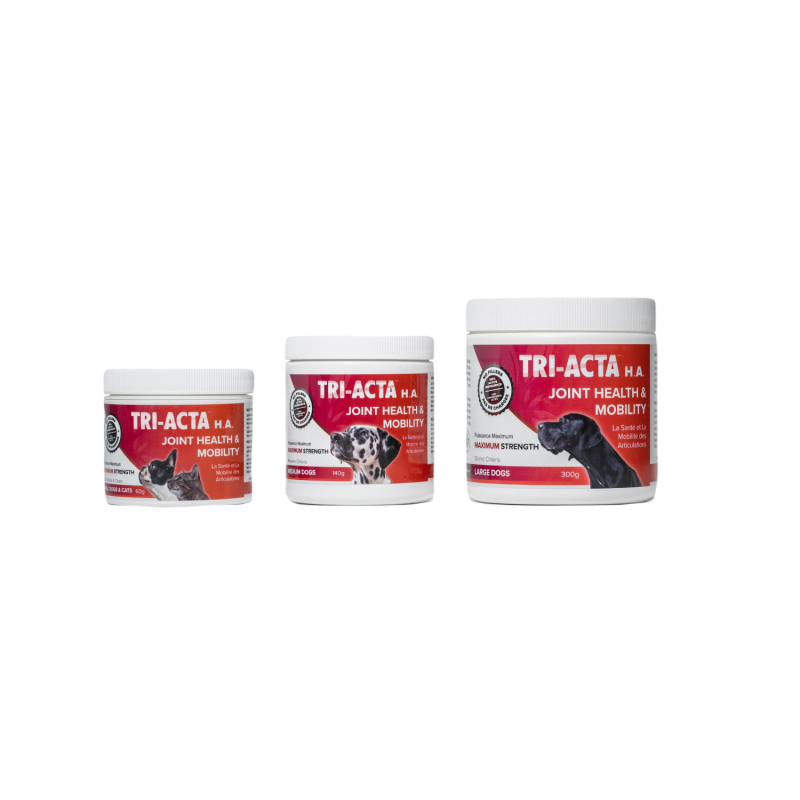
Cat Sneezing a Lot: Final Thoughts
A cat that sneezes now and then is easy to brush off, but frequent sneezing is worth your attention. It can point to irritants in the home, seasonal allergies, or even an underlying infection.
When you stay proactive, you’re not only easing today’s discomfort; you’re helping protect the bright eyes, playful energy, and everyday comfort that make life with your cat so rewarding.
Support your feline companion’s wellness today with daily care and trusted supplements like TRI-ACTA, available online or at a retailer near you.
Newsletter Signup
Subscribe to our newsletter to receive the latest news and exclusive offers.
.jpg?height=2000&name=Cliick_Integricare-DISPLAY-REVISEDV2%20(1).jpg)
Proactive & Therapeutic Joint Supplements
When given daily, Integricare joint supplements recover bone and joint injuries faster and help prevent mobility injuries from happening in the first place.

